
Side chair, Boston, 1700–1710. Maple and oak. H. 43 5/8", W. 17 5/8", D. 14 3/4". (Courtesy, Winterthur Museum.)
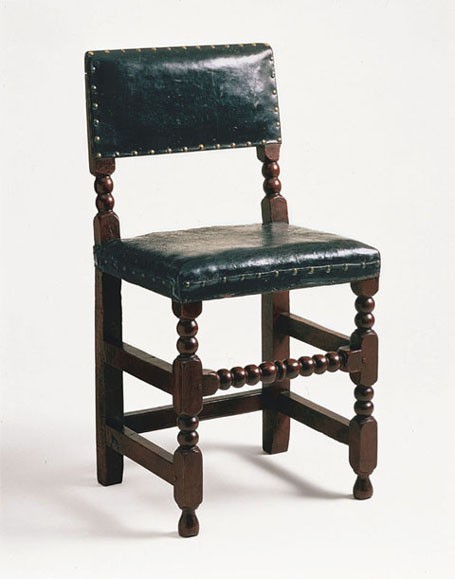
Side chair, Boston, 1650–1700. Maple and oak. H. 36", W. 18", D. 15 1/4". (Courtesy, Winterthur Museum.)

Side chair, Boston, 1685–1700. Maple and oak. H. 35 1/2", W. 18 1/2", D. 18 1/2". (Private collection; photo, Gavin Ashworth.)

Side chair, Boston, 1700–1710. Maple and oak. H. 44 1/2", W. 18 3/8", D. 16". (Courtesy, Saint Louis Art Museum, gift of Mr. and Mrs. E. J. Nusrala.)
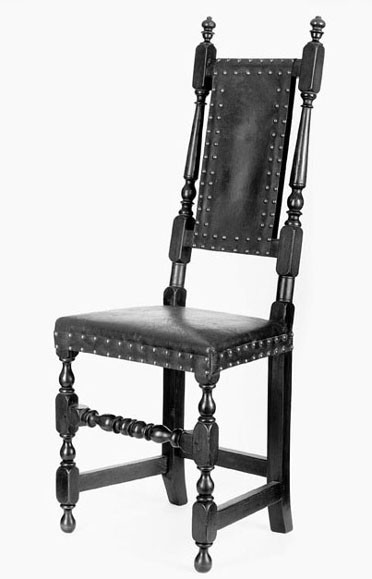
Side chair, Boston, 1710–1720. Maple and oak. H. 47 1/2", W. 18", D. 14 1/2". (Private collection; photo, Gavin Ashworth.)
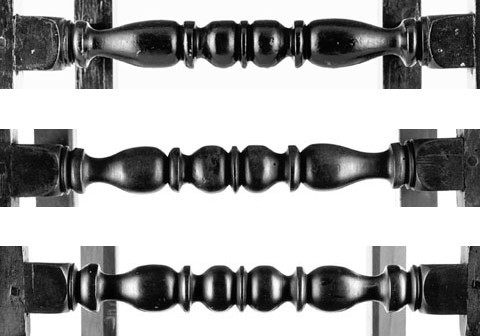
Composite detail showing (from top to bottom) the front stretchers of the (a) late seventeenth-century, Boston low-back chair illustrated in fig. 3; (b) first-generation Boston leather chair illustrated in fig. 1; (c) second-generation Boston leather chair illustrated in fig. 5. (Photo, Gavin Ashworth.) The armchair illustrated in fig. 25 has an identical rear stretcher of the same dimensions as those illustrated here.
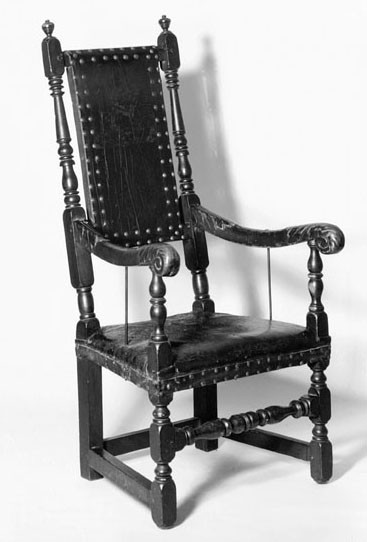
Armchair, Boston, 1700–1710. Maple and oak; original leather upholstery. H. 47 1/4", W. 23 1/2", D. 22 3/8". (Courtesy, Museum of Fine Arts, Boston, Arthur Tracy Cabot Fund.)
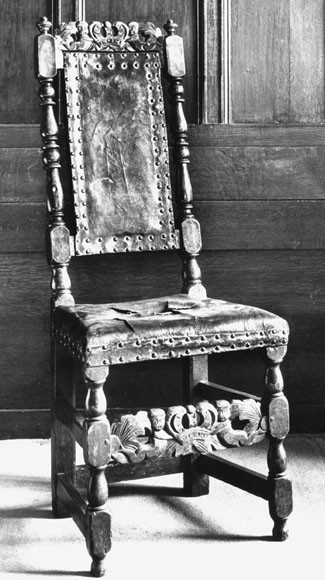
Side chair, probably London, 1685–1700. Woods and dimensions unrecorded. (Photo, Symonds Collection, Decorative Arts Photographic Collection, Winterthur Museum.)
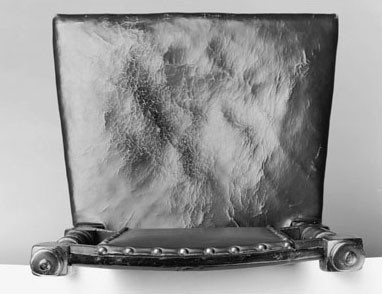
Detail of the hollow back of the side chair illustrated in fig. 29. (Courtesy, Milwaukee Art Museum, Layton Art Collection.)
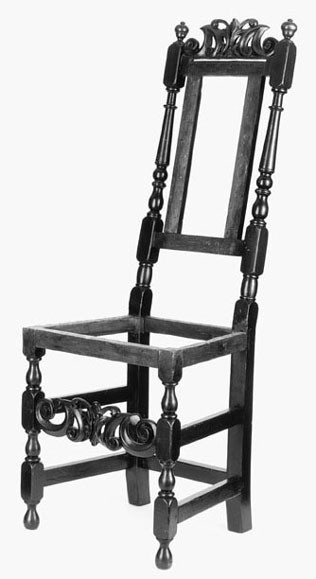
Side chair, Boston, 1700–1710. Maple and oak. H. 47 5/8", W. 17 3/4", D. 14 1/2". (Private collection; photo, Gavin Ashworth.) The carving on this chair is closely related to that on the New York side chair and New York armchair illustrated in figs. 23 and 24 and the Boston armchair illustrated in fig. 25.

Side chair, Boston, 1700–1710. Maple and oak. H. 46", W. 17 3/4", D. 15". (Private collection; photo, Gavin Ashworth.) The rear legs have been improperly restored to incorporate the backward rake.

Side chair, Boston, 1710–1715. Maple and oak. H. 47 3/8", W. 18", D. 14 3/4". (Private collection; photo, Gavin Ashworth.)
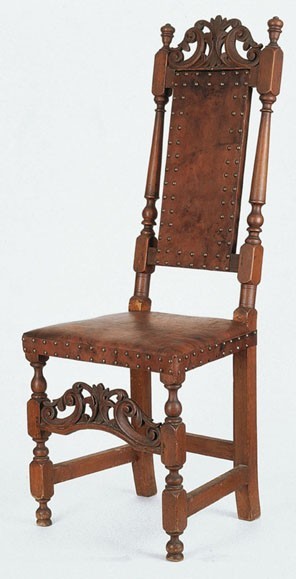
Side chair, Boston, 1710–1715. Maple and oak. H. 48", W. 18", D. 14 3/4". (Private collection; photo, Gavin Ashworth.) This chair retains the first-generation feature of a slit crest rail.
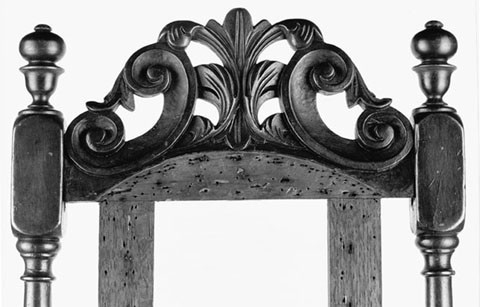
Detail of the carved crest rail of the chair illustrated in fig. 12. (Photo, Gavin Ashworth.)
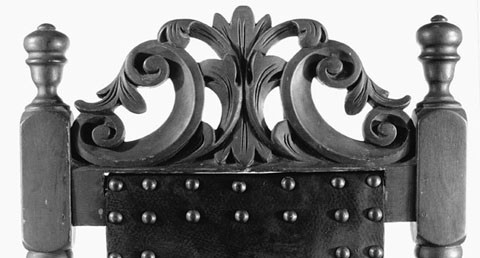
Detail of the carved crest rail of the chair illustrated in fig. 13. (Photo, Gavin Ashworth.)

Detail of the construction of the side chair illustrated in fig. 11, showing the planed surfaces of the front leg squares and overhang of the front stretcher. (Photo, Gavin Ashworth.)
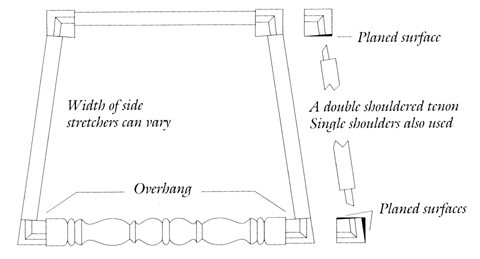
Diagram showing how the seat rails and stretchers join the front and rear legs on first- and second-generation Boston chairs.
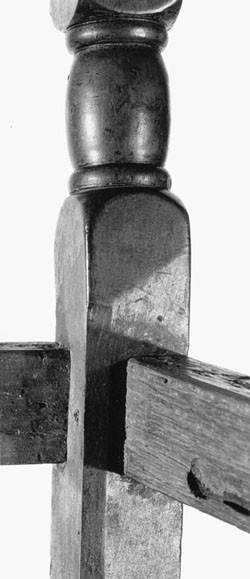
Detail of the side chair illustrated in fig. 11, showing the characteristic chamfering on the rear legs of first- and second-generation Boston chairs. (Photo, Gavin Ashworth.)

Side chair, New York, 1700–1710. Maple and oak. H. 44 3/8", W. 17 3/4" , D. 14 1/2". (Private collection; photo, Gavin Ashworth.) This chair was found in Newburgh, New York.
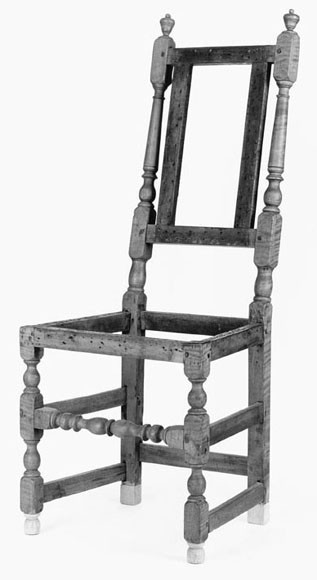
Side chair, New York, 1700–1710. Maple and oak. H. 44 3/8", W. 17 3/4" , D. 14 1/2". (Private collection; photo, Gavin Ashworth.) This chair was found in Newburgh, New York.
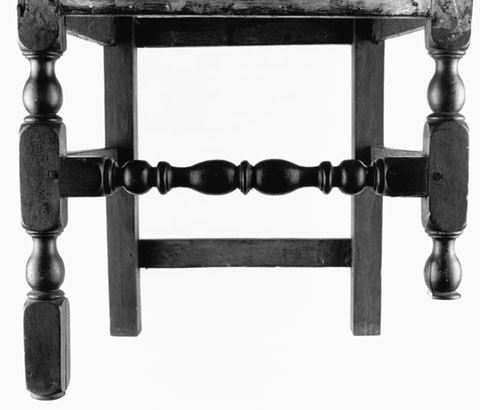
Detail of the front stretcher of the side chair illustrated in fig. 19. (Photo, Gavin Ashworth.) The characteristic elements are the extra balls on the outer ends. See also figs. 20, 24, and 28.
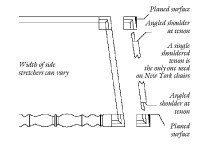
Diagram showing how the seat rails and stretchers join the front and rear legs on New York chairs.
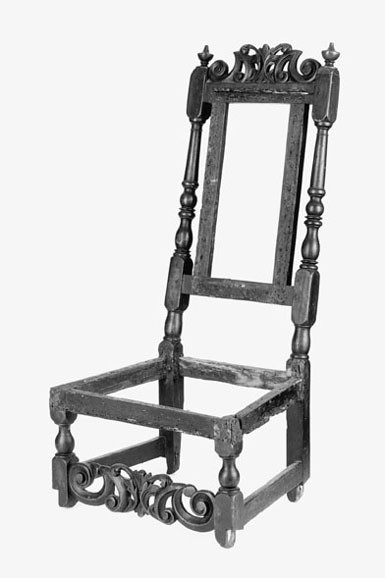
Side chair fragment, New York City, 1700–1710. Maple and oak. H. 38", W. 17 3/4", D. 14 1/2". (Private collection; photo, Gavin Ashworth.) This chair was found in Greenwich, Connecticut.

Armchair, New York City, 1700–1710. Maple with oak. H. 52", W. 24 3/4", D. 17 1/2". (Courtesy, Chipstone Foundation; photo, Gavin Ashworth.)

Armchair, Boston, 1700–1710. Maple with oak. H. 53 3/4", W. 23 7/8", D. 16 3/8". (Courtesy, Museum of Fine Arts, Boston, gift of Mrs. Charles L. Bybee; photo, Edward A. Bourdon, Houston, Texas.)
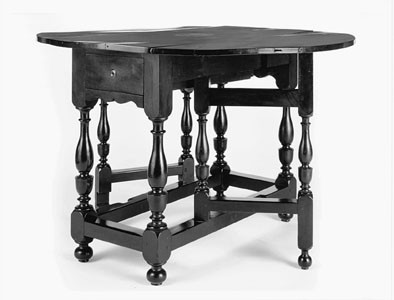
Gateleg table, New York City, 1690–1720. Mahogany with maple, yellow poplar, and oak. H. 28 7/8"; top: 40 3/4" x 44 1/2" (open). (Courtesy, Museum of the City of New York www.mcny.org, gift of the Reynal family; photo, Gavin Ashworth.)
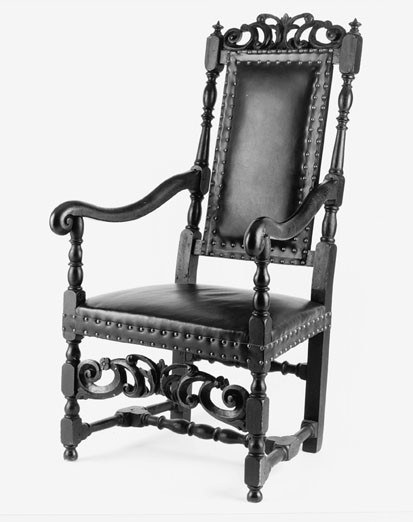
Armchair, New York, 1700–1710. Maple with oak and hickory. H. 47 1/2", W. 25 1/2", D. 27". (Courtesy, Historic Hudson Valley, Tarrytown, New York.) The feet are replaced and the finials are incorrectly restored.

Armchair, New York, 1680–1700. Maple stained red. H. 44 1/4", W. 22 1/2", D. 22 1/4". (Private collection; photo, Christopher Zaleski.)
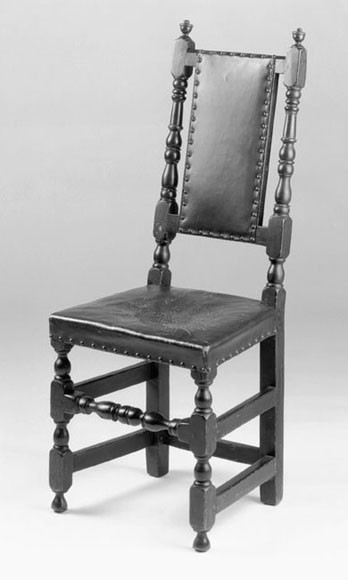
Side chair, Boston, 1700–1725. Maple, oak, leather. H. 45 5/8", W. 18 1/8", D. 15 1/4". (Courtesy, Milwaukee Art Museum, Layton Art Collection, L192.116; photo, Richard Eells.)
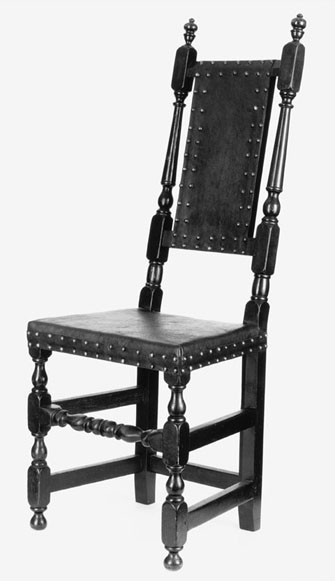
Side chair, Boston, 1700–1710. Maple and oak. H. 46 3/4", W. 18", D. 14 3/4". (Private collection; photo, Gavin Ashworth.)
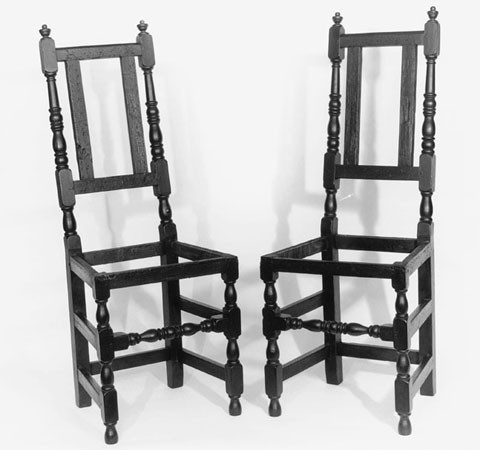
Side chairs, possibly New Hampshire, 1700–1710. Maple and oak. H. 47 1/2", W. 17 3/4", D. 15". (Private collection.)
